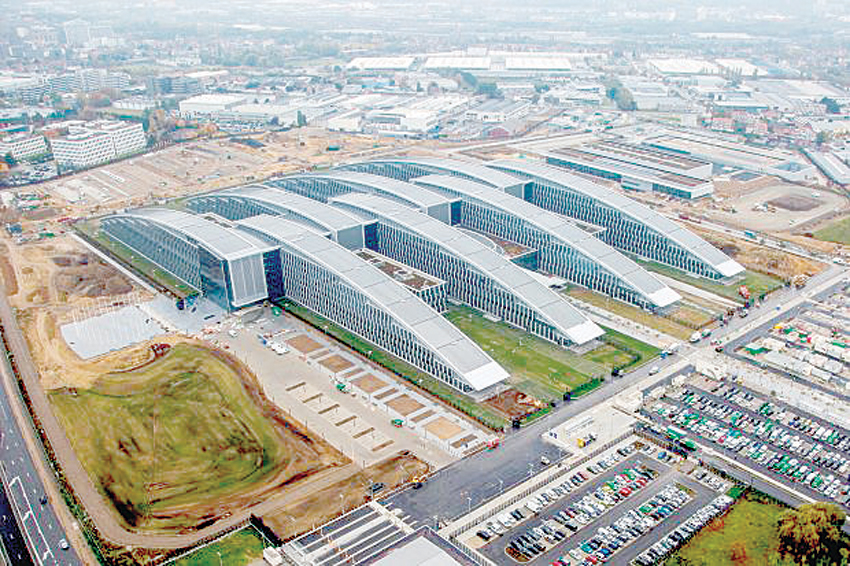

BRUSSELS: Almost two decades in the making, Nato’s new billion-dollar headquarters was finally handed over to the Western alliance by its Belgian builders on Thursday, just in time for US President Donald Trump on his maiden visit.
Agreed at a Nato summit in 1999, the claw-like glass and steel interlocking buildings with glazing equivalent to 10 football pitches are, officially, not over budget and not delayed, despite media and staff reports to the contrary.
The new structure cost some 1.1 billion euros ($1.2 billion).
“I never asked once what the new Nato HQ costs. I refuse to do that,” said Trump, a former real estate developer who is known to boast that his projects were done under budget and on time. ‘‘But it is beautiful.”
Staff are currently housed in a 1960s-era headquarters across the street in Brussels which was once an airfield used by Germany during World War Two.
It was constructed in a hurry when the alliance was forced to leave Paris after France’s withdrawal from the North Atlantic Treaty Organization’s military command in 1966.
Then, much of the constructors’ energy went into dismantling the concrete airstrips on the site and erecting a series of buildings with a design “free from any architectural extravagance,” according to former Nato official Francois Le Blevennec, who witnessed the move from Paris to Brussels.
“One of the secretary general’s major problems at the time was the widespread lack of enthusiasm among the international staff for moving to and setting up house in Brussels,” Le Blevennec wrote for Nato’s website before retiring in 2007.
After decades of working in the charmless, beige-coloured blocks on the eastern edge of Brussels, staff enthusiasm is greater this time round, not least because the current headquarters was meant to be temporary and almost a fifth of the office space is made up of portacabins.
“There are regular leaks in the buildings,” said one of Nato’s envoys whose staff have become accustomed to the shabby offices.” And we are not talking about intelligence.”
Housing 29 allies when Montenegro joins Nato next month, along with 42 kilometres-worth of archives, the 4,200 staff will work in a total office space similar in area to the United Nations headquarters in New York.
Except that to meet Belgian building requirements, the Nato HQ is only 32 metres tall at its highest point.
In a throw-back to Nato’s origins in the Cold War, the new headquarters features two concrete panels from the Berlin Wall.
It also displays a piece of the wreckage from the 107th floor of one of the Twin Towers in New York, destroyed during the September 11, 2001 attacks on the United States — the only time the alliance has activated its collective defence clause.
The largely key-less building relies on ID badges to reach the classified North Atlantic Council meeting rooms, where electronic “NATO SECRET” signs adorn the walls, but does not have any special protection against possible militant attacks.
Still, in an era of computer hackers and state-sponsored cyber attacks, Nato is not quite ready to move staff in.
“There are some IT issues,” said a Nato official, declining to give more details because the information is classified. — Reuters
Oman Observer is now on the WhatsApp channel. Click here



